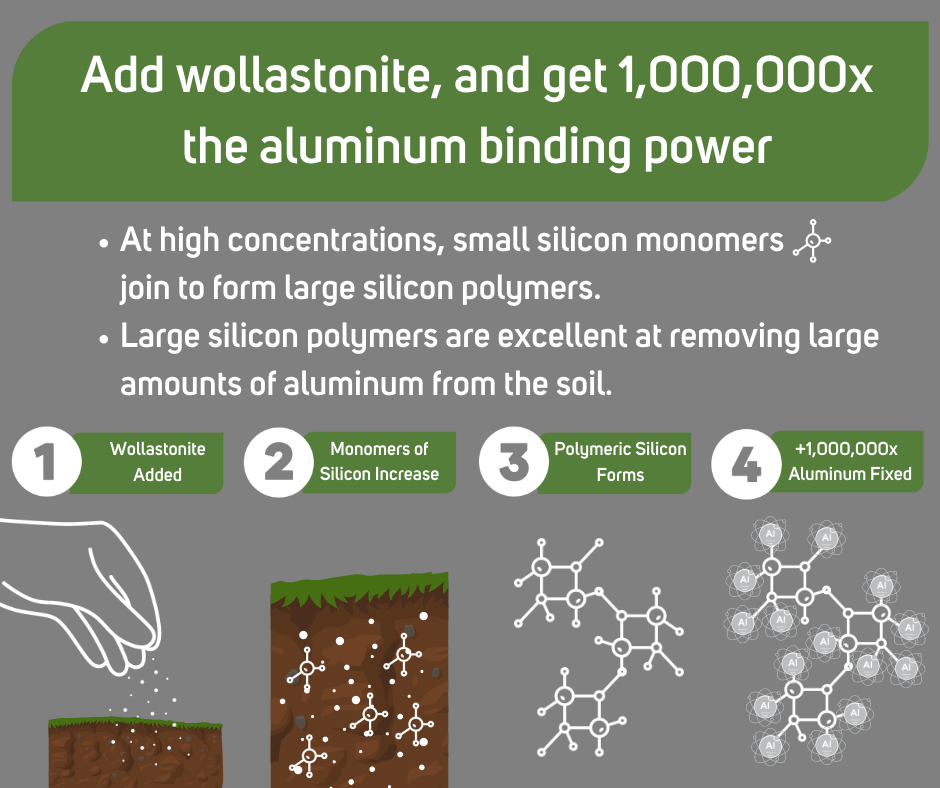What's New
Wollastonite could increase the removal of soluble aluminum 1,000,000x in the soil

We are diving a little deeper into the inorganic binding of soluble aluminum in soils this week by looking closely at how higher levels of silicon in the soil can lead to a drastic increase in the capacity of the soil to bind soluble aluminum, reducing its negative impact on plant growth.
Silicon monomers are small molecules containing silicon, oxygen, and hydrogen. At low concentrations, monomers stick to their own business of being a plant-available form of silicon without much capacity to bond with soluble aluminum in the soil. When the concentration of these monomers is increased and under a higher pH, the monomers form polymers. Silicon polymers are large molecules and store silicon in a form that is not plant available. However, there are lots of monomers around still and plants will appreciate having less soluble aluminum around in the soil due to the enormous aluminum binding capacity the large polymers have. And now we are on our way to forming highly reactive secondary clay minerals (read our blog here about the neoformation of clays).
Here is the research paper showing the increased aluminum binding capacity of polymeric silicon molecules: Soluble Silica with High Affinity for Aluminum under Physiological and Natural Conditions.pdf
Here is our blog focusing on the organic binding of aluminum as a result of wollastonite application. In this case, the calcium is doing the heavy lifting.
